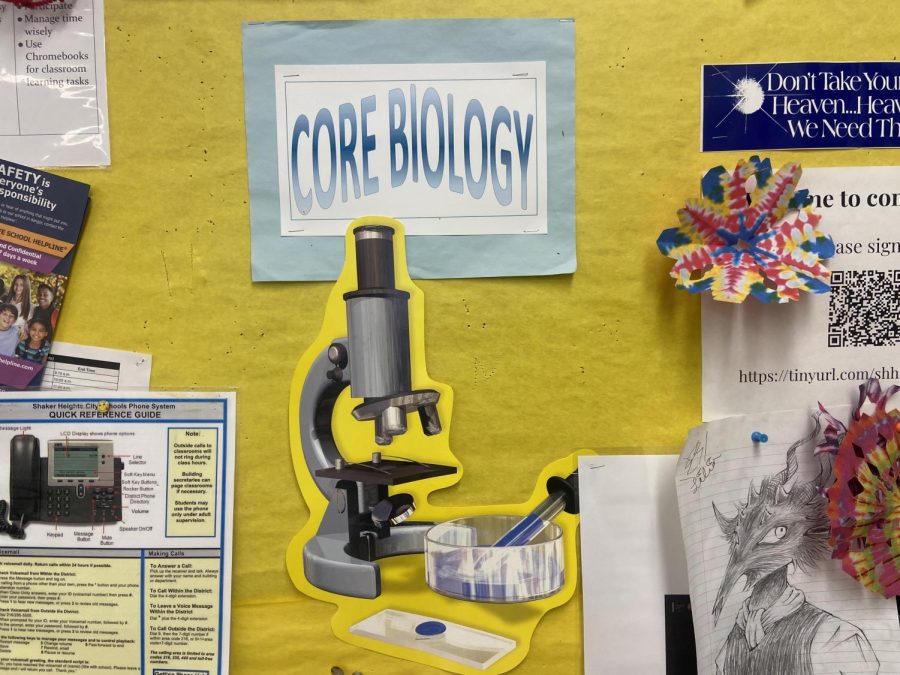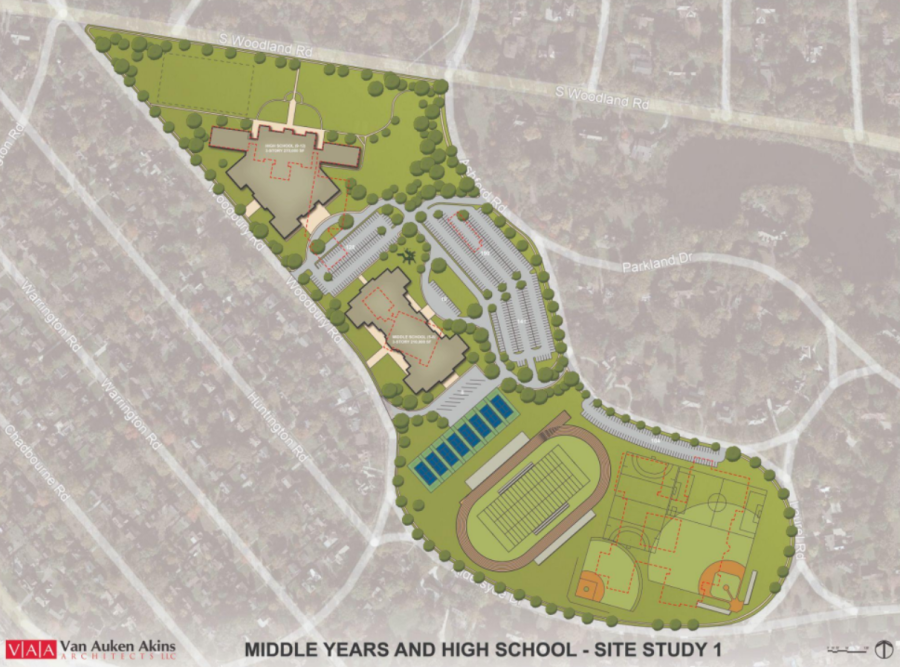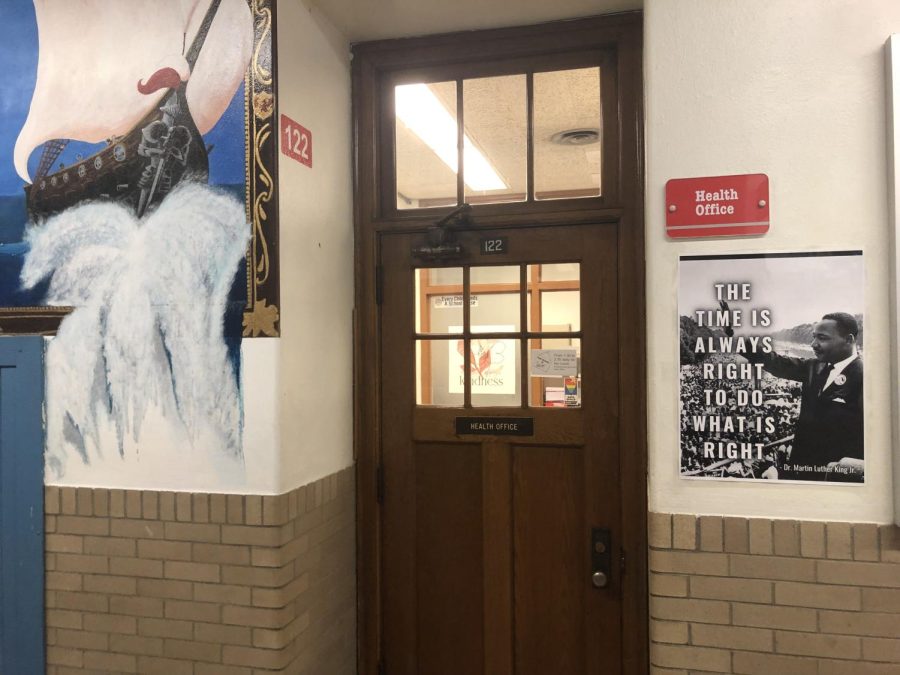To recognize the centennial, Cover Story editors browsed 100 years of Shaker’s history and took a closer look at 10 of the most significant events.
The village begins, 1912 – Oris Paxton and Mantis James Van Sweringen saw potential in a piece of land that had originally been part of the North Union Shaker Colony. They planned to create an exclusive community of residential suburbs with two rapid transit lines. This community would display the ideals of the Garden City movement, comprising residential, industrial and agricultural areas surrounded by parks. Shaker Heights was established as a village in 1912, comprising what are now North Park, Coventry, South Woodland and Warrensville Center roads.
Completion of the rapid, 1920 – The Shaker Heights rapid was designed to provide public transportation to downtown Cleveland. When the Van Sweringen brothers were only able to get a small extension from the Cleveland Railway Company into Shaker Heights, they built their own rapid transit service. They obtained four acres downtown for the terminal (now Terminal Tower), and right-of-way properties for the trains. The rapid was completed in 1920 and traveled from Public Square downtown to Shaker Heights.
A city is created, 1931 – In 1931, the Shaker Heights charter was approved. It became a city led by Mayor William J. Van Aken.
Bomber responds to integration, 1956 – Despite the 1948 Supreme Court decision that made home sales based on race illegal, the home of an African-American family in the Ludlow area was bombed in 1956. The Ludlow area was the first neighborhood to which African-American families moved when leaving Cleveland. After the bombing, black and white community members united to help the victimized family to rebuild their home, and created the Ludlow Community Association to aid with integrating the neighborhood. The photograph to the right shows the Ludlow home before it was destroyed in the bombing.
Former Asylum patient shoots doctor, bombs police station, 1970 – 21-year-old Shaker resident Martin Berns had been a patient at the Cleveland State Mental Hospital. On Feb. 1, 1970, he shot Dr. Irving Rosen, the psychiatrist who had committed him. Rosen survived the shooting.
Berns then went to the Shaker Heights police station, where he detonated a box of nitroglycerin, demolishing the 12- year-old building, injuring 15 and killing himself. Police found evidence that Berns planned to bomb the high school, which he attended for one year before dropping out.
In 1973, a new police station and courthouse were built and dedicated. Both were designed to withstand a bomb blast.
Redistricting and diversifying Shaker schools, 1987 – Shaker Heights was redistricted in the 1980s, when school enrollment was declining nationally due to the “baby bust.” In 1985, Woodbury Junior High School (grades 7-9) was closed. It reopened two years later as Woodbury Elementary school (grades 5-6). Byron Junior High became Shaker Middle School (grades 7-8) and 9th grade was moved to the high school. In 1987, the elementary schools were reorganized: Moreland, Ludlow, Malvern and Sussex schools were closed and repurposed, and the boundaries for the elementary schools (grades K-4) were redrawn into the districting system in use today. This process served to diversify the elementary schools during a period when the number of white families in Shaker dropped dramatically, and encouraged the desegregation of Shaker, which began in the 1970s.
Superintendent Mark Freeman stated, “I think the peaceful desegregation of the schools in the 1970s was a defining moment in Shaker’s history . . . Shaker made a commitment to voluntary desegregation.” The photograph above shows Freeman’s daughter on her first day of school under the desegregation policy.
Rodney King verdict spurs student walkout, 1992 – Shaker students gathered on the front lawn May 1, 1992 to protest the not-guilty verdict in the Rodney King trial. King, an African-American man, had been repeatedly beaten by Los Angeles police officers in March 1991 while several other officers stood by and watched. The policemen were not indicted, and riots broke out nationwide to protest racism. Senior Class Adviser Jewels Rossi participated in the walkout when she was a student at the high school. “[School staff] brought us megaphones and risers,” she said. “They used it as a learning experience.” The photograph to the left, which appeared in the June 4, 1992 edition of The Shakerite, shows students who participated in the walkout.
Racial statistics cause uproar, 1997 – In 1997, the district compiled data that documented academic underachievement and found that a majority of struggling students were African-American. Shakerite editors obtained the data before it was presented by the school board and published it in the February 1997 issue. The results appeared on the front page of the issue with the headline “Black and White or Shades of Gray?” Beneath the headline were two data boxes, one stating the results of the study and the other proposed solutions (shown to the left). The article caused uproar in the school and broader community.
The day students and faculty received the newspaper, Principal Jack Rumbaugh made a public address announcement chastising The Shakerite for publishing the data. Outraged by the story, students organized a walkout and gathered on the front lawn, drawing the attention of Channel 5 news. Some Shakerite editors were escorted through the hallways by school security to remain safe. Community members also called for Shakerite adviser Sally Schwartz to resign. After school, a meeting was convened for students to discuss their reactions to the information and its publication.
High school band makes history playing in China, 2007 – The high school band traveled to China over spring break 2007. Principal Michael Griffith called it a landmark trip. “The trip to China was phenomenal because, whether the kids knew it or not, I knew that we were making history,” he said. Band director Tom Deep was told by both United States and Chinese trip coordinators that the Shaker band’s performance was the first large event to receive a permit from the Beijing to perform on Wangfujing Street since the incident in Tiananmen Square (1989), when the Chinese military killed several hundred civilians who were participating in a democratic protest.
“The band director from School #166, which was the public school that joined us for that concert, was very concerned to make sure that her band was listed on the permit as well as Shaker’s band,” said Deep. “She said that her band would not have been permitted to perform there without us having received the proper permission.”
The band’s performance resonated as a groundbreaking event in China and Shaker alike. Watching the students on a JumboTron screen in a city square in China deeply affected Griffith. “The kids had no idea what they did, no idea what just happened,” he said.
Sitting President Obama speaks at high school, 2012 – President Barack Obama visited the high school twice after being elected in 2008. His first visited July 23, 2009 and returned Jan. 4, 2012. During his first visit, Obama addressed his proposed health care reform bill, which subsequently passed. During his second visit, Obama announced his appointment of former Ohio Attorney General Richard Cordray as director of the newly created Consumer Financial Protection Agency and emphasized the need to protect consumers from “abusive financial practices.”
Because so many people were affected by the visit, Principal Michael Griffith said that greeting Obama as he arrived and being on stage during the 2012 speech gave him a feeling of euphoria. “It was a celebration of the whole community, not just the school,” Griffith said.
A version of this article appeared in print on 8 February 2012, on pages 8 and 9 of The Shakerite.





